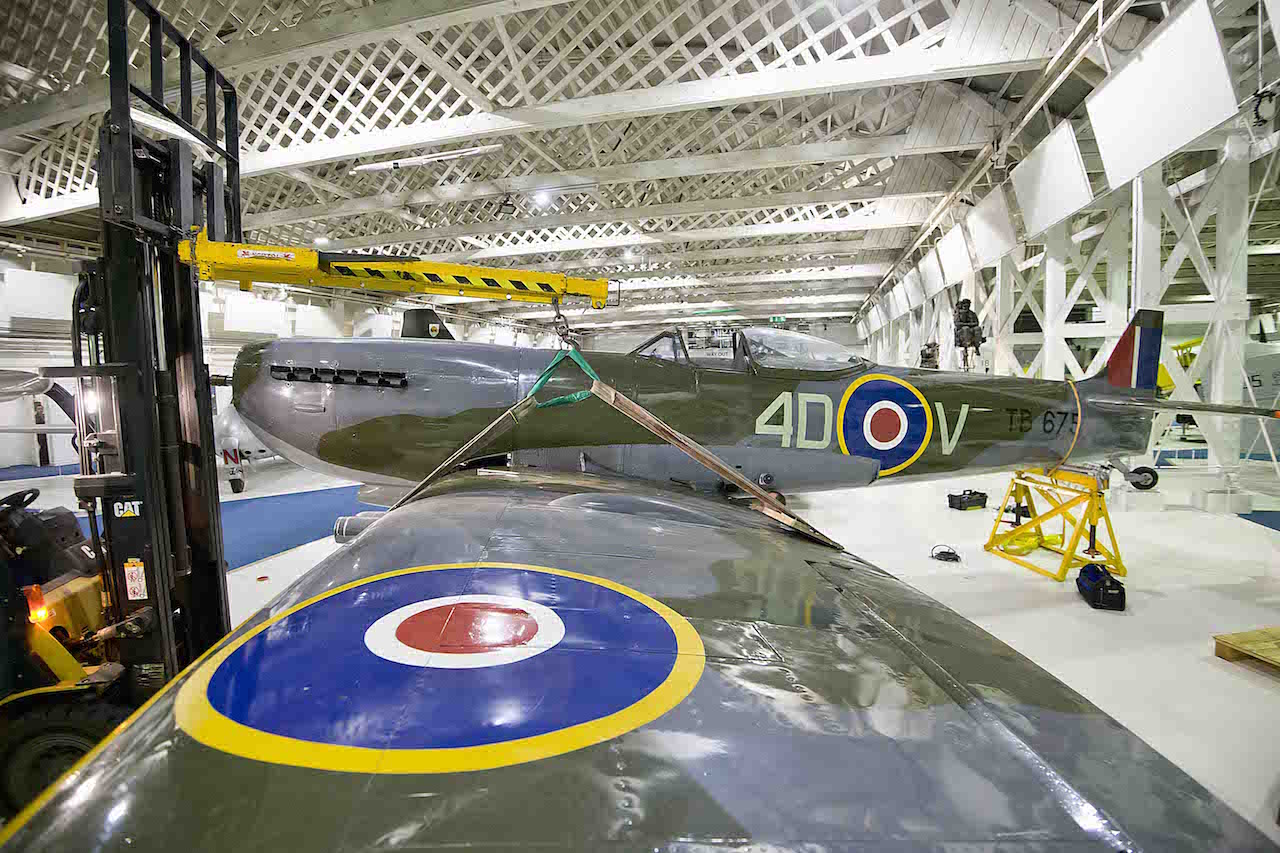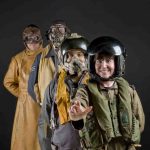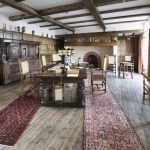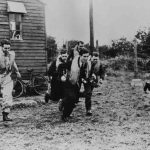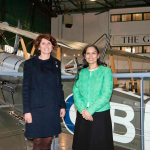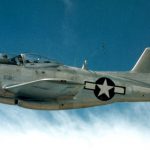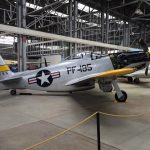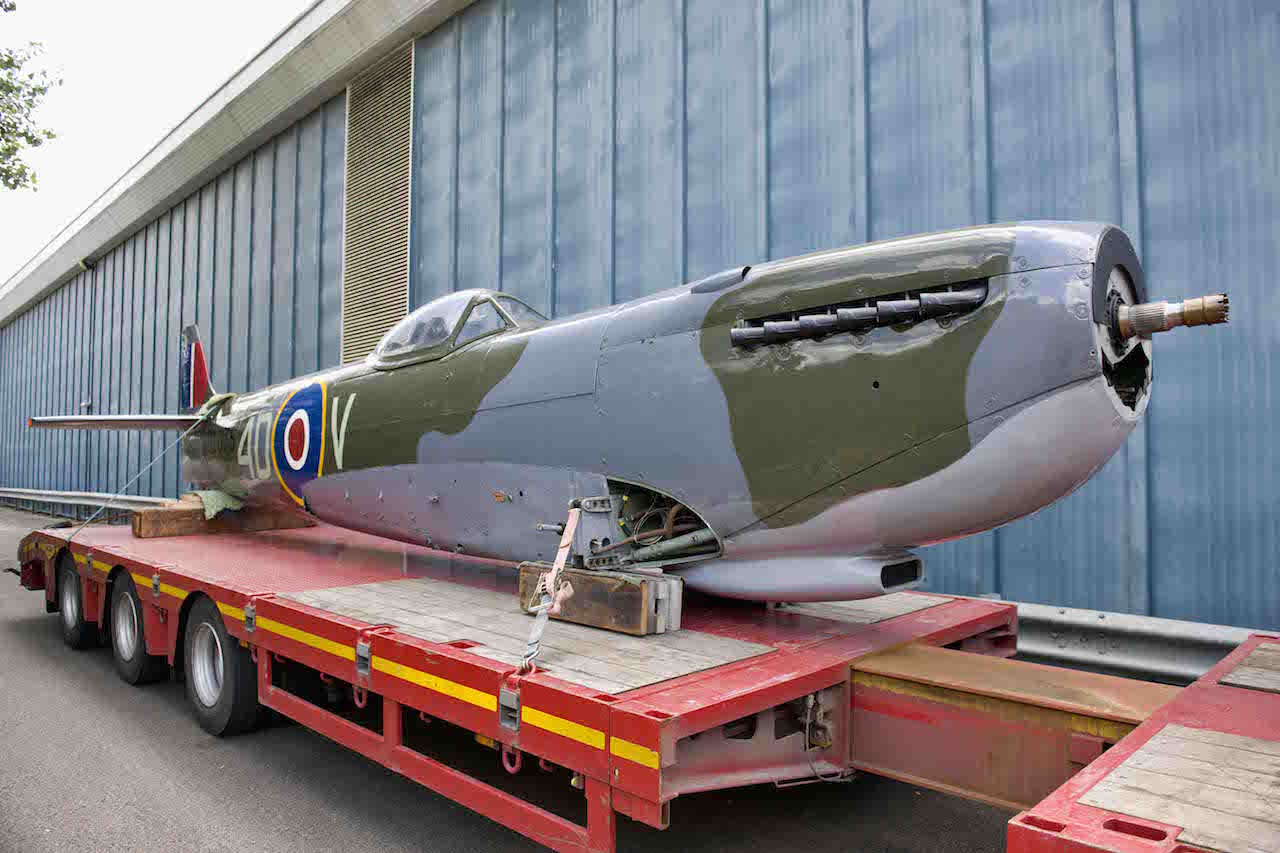
As part of their 75th anniversary commemoration of the Battle of Britain, the Royal Air Force Museum in Hendon (London), England will unveil their new Sit-In ‘Spitfire Experience’ this August. For the first time ever, visitors will be able to sit in the cockpit of their Supermarine Spitfire Mk.XVIe RW393 and get a feel for what a wartime pilot might have seen and felt before heading off on a mission to battle the Luftwaffe. In actuality, RW393 is a much later variant than those dueling with Messerschmitts over Britain in 1940, but it is still a close stand-in for the Mk.Is of the day. The opportunity to sit in her cockpit will be available to the general public until the end of September.
While the RAF Museum is free to the general public, sitting in the Spitfire will require a small fee of £4 per person. This is justified because while the museum does receive operational funding from the British Ministry of Defense, this mostly just covers day-to-day operations rather than more ambitious endeavors such as conservation and special exhibits. And as RAF Museum Hendon states in its press release, “In order to conserve our collection and improve the Museum we rely on the museum’s supporters – the Museum needs your help. 2018 will mark the 100th anniversary of the RAF and we are looking to transform the Museum through four new exhibitions, new learning programmes and better facilities for visitors. We have already completed part of this project through the new First World War in the Air exhibition and have raised over £12 million towards future works (out of £23 milion). All donations made through the ‘Spitfire Experience’ will support the ‘Historic Hendon’ phase of the project which will tell the story of the museum’s former life as an airfield, it was on the airfield where the museum now stands that Spitfires departed for the Battle of Britain and Winston Churchill first learnt to fly. Donations will also help to ensure that the museum is enjoyed by the local community for generations to come.”
Details of Spitfire LFXVIe RW393’s History: (text by Andrew Simpson)
MUSEUM ACCESSION NUMBER 1995/1012/A
20 Jan 44– Ordered as one of 700 Spitfire Mk.21 aircraft, cancelled in August 1944 but partially re-instated as 40 Mk XVI aircraft. Built at Castle Bromwich. Serial block RW373 – 396.
20 Jul 45 – To No.6 Maintenance Unit, RAF Brize Norton, Oxon.
3 Nov 47 – To the Spitfire L.F.XVI equipped No.203 Advanced Flying School at RAF Chivenor, Devon.
22 Jan 48 – To Fighter Command Control and Reporting School, RAF Middle Wallop, Hants. This unit used Spitfire L.F.XVI and Airspeed Oxford aircraft to train fighter controllers.
1949 – Flown as the personal aircraft of the AOC Fighter Command – Air Marshal Sir William Elliot (AOC Fighter Command 1947 -49) whilst on charge to No.31 Squadron (Metropolitan Communications Flight) at RAF Hendon. Painted white overall with a red flash on both sides of the fuselage, made up with red crosses and blue serial numbers. Photo at RAF Odiham, Hants 1949 – Spitfire – A Look Back Over The Gate p.27. No codes but badges including that of Fighter Command carried below the cockpit. Photos also RAF Aircraft PA100 – RZ999 (air Britain) p.52; Spitfire: The History p.436; Flypast January 2006 p.78 and Flypast March 2006 p.74.
22 Mar 51– Suffered Cat.3 damage in a landing accident- whilst landing in a crosswind at Hendon in the early afternoon after a local flight. The aircraft ran off the runway into soft ground and tipped onto its nose. The pilot was uninjured.
2 Apr 51 – Under repair by a party from No.58 MU, Skellingthorpe until 16 May 51.
17 May 51 – Re-joined No.31 squadron. By early 1953 the aircraft was on Embassy Flight, housed in the Grahame White hangar, and was known as the ‘Clipped Wing Wonder’ (Flypast March 2006 p.74).
28 Oct 53 – To No.3 Civilian Anti-Aircraft Co-operation Unit at Exeter Airport, Devon coded ‘B’ in blue below the cockpit and still in overall white. Photo May 1954- Air Pictorial Jul 54 p.208; Aviation News 1/21 p.8. Colour Profile – Supermarine Spitfire Mk I – XVI (004129) . This unit provided calibration and target towing for the Army, Navy, and RAF. The aircraft were Air Ministry owned but civilian crewed. Exeter then held the largest Spitfire unit remaining in the country.
6 Jul 54 – To No.45 Maintenance Unit RAF Kinloss. Ten other Spitfire Mk XVI aircraft were retired by the unit that year. Four other Spitfires remained with the unit until 1956, being progressively replaced by Vampire FB.5 aircraft.
13 Dec 54 – Classified non-effective stock.
17 Sep 55 – Displayed at RAF Kinloss Battle of Britain Day.
14 Dec 55 – Allotted instructional serial 7293M for issue to No.603 Squadron at RAF Turnhouse from No.45 MU for use as a display airframe.
27 Mar 56 – Issued to No.602 Squadron at RAF Abbotsinch with the instructional serial 7293M. Photo at this time still in overall white, with code ‘B’ and RW393 serial crossed out and replaced by roughly applied 7293M serial – Spitfire: The History (021012) p.436.
12 Jan 57 – No.602 Squadron disbanded at Abbotsinch.
9 Mar 57 – Re – allocated to RAF Turnhouse (Edinburgh) for display duties and placed outside the station H.Q; 603 Squadron disbanded the following day.As first displayed the aircraft was camouflaged and carrying an approximation of the wartime markings of No.603 (City of Edinburgh) Squadron Royal Auxiliary Air Force with the fuselage codes XT-A and no serial numbers. Photo – Military Aviation Review Nov 78 p.10. The aircraft was regularly cleaned and inspected by 603 Squadron personnel.
1975-1976 – Refurbished by the Engineering Wing at RAF Kinloss. Returned to the gate at Turnhouse by April 76 still camouflaged as XT-A.
4 Oct 89 – Stored at RAF St Athan with other former Gategaurd Spitfires. Photo at St Athan 1990 – Spitfire – A look Back Over The Gate p.28.
Mar 95 To RAF Museum Storage and Restoration Centre at RAF Cardington.
1 May 95 – To Aerospace Museum Cosford, Salop for display, replacing Spitfire XIV MT847 which had moved to Manchester.
8 Jan 2003 – Following replacement on display by Spitfire Mk.1 K9942 from Hendon, moved to storage at RAFM facility at RAF Stafford.
16 Mar 05 – By road to RAFM MBCC, RAF Cosford, for cosmetic attention prior to display in the ‘Living Museum’ forming part of the VE/VJ 60th anniversary celebrations in St James’s Park, London. Repainted as a wartime 74 Squadron aircraft, TB675/4D-V.
28 Jun 05 – By road to London for the exhibition, which was open to the public 4-10 July. Photos at the exhibition; Flypast September 2005 p.5; Wingspan International 30 pp.76-77.
12 Jul 05 – By road to RAFM Hendon for temporary storage.
17-18 Sep 05 – Displayed at RAFM Battle of Britain weekend event. Photo-Flypast December 2005 p.12.
20 Sep 05 – Dismantled, and returned to RAFM Cosford for display the following day (21 September).
21 Mar 06 – Returned to RAFM Hendon by road for further temporary display over the summer, being placed outside by the Milestones building on 24 August 2006, returning to the Bomber Command Hall 12 October 2006.
6 Jun 07 By road to RAFM Stafford for storage, following display at the RAF Museum Pageant weekend 2-3 June 2007. Delivered 7 June 2007.
21 July 2015 – By road to RAFM Hendon for display in Historic Hangars.








